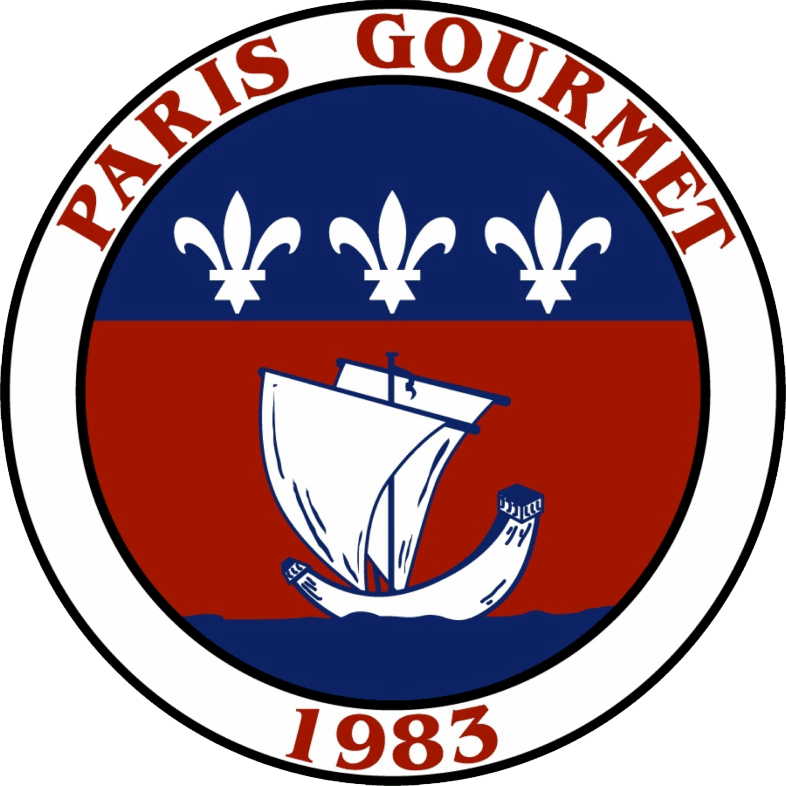Rocher
- By Charlotte Brown
- October 15, 2025
IN THE WORLD OF SWEET TREATS, THE TERM "ROCHER" REFERS TO A WIDE VARIETY OF PASTRY, CONFECTIONERY AND CHOCOLATE RECIPES. WHAT THEY OFTEN HAVE IN COMMON IS THEIR IRREGULAR APPEARANCE AND GRANULAR TEXTURE, REMINISCENT OF A ROCK.
Text by Eric Birlouez
Dictionnaire de la gourmandise. Annie Perrier-Robert. Robert Laffont. 2012
Almanac of Gourmets, serving as a guide to the means of making excellent food; by an old connoisseur. Alexandre Balthazar Laurent Grimod de La Reynière. 1803-1810 (7 volumes).
iconic desserts
an essential for any window display
In her "Dictionnaire de la gourmandise", Annie Perrier-Robert defines rocher as "a small Swiss meringue-based petit four, whose irregular appearance evokes a rock." She mentions several versions, such as the almond rocher, with flaked almonds added to the dough, or the rocher with coconut or pine nuts (finely chopped), or the rochers with candied fruit, orange, coffee, chocolate, etc. The author of the dictionary also mentions the "rocher à l'italienne", which she describes as "a kind of irregularly shaped meringue reminiscent of a rock, crisp on the outside and soft on the inside, with sugar and vanilla, baked on a buttered and floured tray like ordinary meringues".
 This delicacy is particularly appreciated for its double texture: a crunchy coating and a melting praline heart
This delicacy is particularly appreciated for its double texture: a crunchy coating and a melting praline heart
But today, the rocher that first springs to mind is this large chocolate, reminiscent of the shape of a rock. Its globalized version is the flagship product of a very famous Italian brand of chocolates and industrial spreads. This delicacy is particularly appreciated for its double texture: the crunchiness of the coating— dark or milk chocolate sprinkled with hazelnuts and/or almonds—is combined with the creaminess and melt-in-the-mouth texture of the delicately scented praline center. Almonds and hazelnuts are sometimes supplemented, or even replaced, by pistachios.
Rochers in Local Colors
The town of Biarritz, in the Basque country, has its very own rochers, which of course mirror the large boulders that dot its beach and coastline.
In the Meuse department of Lorraine, the rocks of Saint-Mihiel pay tribute to the seven limestone rocks—ancient coral reefs—that stand at the entrance to this small town (known locally as the Dames de la Meuse).
These delicacies feature a layer of dark or milk chocolate surrounding a heart of hazelnut kernels, roasted and crushed, mixed with dark or milk chocolate. A simple spoon is used to raise the mixture into small heaps. The "rochers de Saint-Mihiel" were invented in 1922 by a man named Rollot, who took advantage of this invention to rename "croquets de Saint-Mihiel" a historic specialty of his pastry shop: dry sponge cake in the shape of rectangular sticks rich in almonds and flavored with vanilla. In 1994, a "Guild of Saint- Mihiel croquets and rochers" was created to jointly promote these two delicacies.
 In Lorraine, the rochers of Saint-Mihiel pay tribute to the seven limestone boulders at the entrance to the town.
In Lorraine, the rochers of Saint-Mihiel pay tribute to the seven limestone boulders at the entrance to the town.
In the same region, minettes de Lorraine are almond and hazelnut rochers. They are said to have been inspired by the iron ore, known as minette, that was once mined locally. In the same spirit, charbons from Lorraine— a mixture of hazelnuts, almonds, honey and chocolate—look (but, fortunately, don't taste!) like blocks of coal. They were invented in the 1970s by a pastry chef in Saint-Avold, a small historic town in the heart of the Lorraine coalfield.
Coconut rocher, also known as rocher coco or rocher congolais, is a soft, grainy sponge cake made from egg whites, grated coconut, icing sugar and milk. Some artisans have revisited the coconut rocher by coating it with chocolate or incorporating melted chocolate into the recipe to create a blend of textures and flavors. Coconut rocher is thought to have appeared in the early 20th century.
A True Rocher
In patisserie, the term "rocher" can also be used to designate a wedding cake, like the edible structures that were very fashionable in the 19th century, made from blown sugar or colored sponge cake. In 1806, Grimod de la Reynière, one of the founding fathers of gastronomy, wrote in the ‘Almanach des Gourmands’ about the fashion among the bourgeoisie to invite guests to mid-afternoon receptions known as "teas". Grimod specifies that "if we want them to make a mark in the world, it is not permitted to give [these teas] without a rocher marking their center." In the 19th century, frozen rochers were also very popular: these were compositions of different-colored ice creams, which were erected into the shape of a boulder as they were served. Another example is meringue rochers, where the meringues are sealed together using sugar cooked in a pan.
These days, chocolate rochers are enjoyed on a variety of occasions
These days, chocolate rochers are enjoyed on a variety of occasions, attheendofamealwitha cup of coffee, as a sweet treat between two meetings, to decorate homemade pastries or to share on a festive occasion (rochers are often given as gifts at the end of the year).
 David Lambert
David Lambert
DAVID LAMBERT, PATISSIER- CHOCOLATIER IN CHARTRES, NOGENT-LE-ROTROU AND LUCÉ (28)
A trained pastry chef, David Lambert settled in Arcisses, near Nogent-le-Rotrou, in 2001. Since then, he has opened two other stores in Chartres and Lucé. Passionate about chocolate, the craftsman has been recognized for his creations. In November 2023, he was ranked as one of the twelve best chocolate makers in France, according to the Club des croqueurs de chocolat. David Lambert received a tablette d’or for the consistency of his products and an award for their balanced flavors. On a daily basis, he takes care to work with quality raw materials, many of which come from local supply chains, like the hazelnuts used in his rocher.
